News
The 5 Greatest Horror Performances Not Nominated for Oscars
Why do performances in horror films receive less recognition, at Oscar time, than performances in films from other genres?
Is it because the horror director is often viewed, by audiences and critics, as the real star of these films, while the performances of the actors are often considered entirely irrelevant, secondary, to the film’s success. The Blair Witch Project and the original version of The Texas Chainsaw Massacre provide the most severe examples of this.
What is the best performance in a horror film from, say, the past twenty years? Angela Bettis in May? Chloe Grace Moretz in Let Me In? Was there any possibility of either of these great performances being recognized by the Academy? No. They didn’t have a snowball’s chance in hell.

There have, of course, been exceptions. Piper Laurie and Sissy Spacek were both nominated for their great performances in 1976’s Carrie. Kathy Bates won the Best Actress Oscar for 1990’s Misery. Anthony Hopkins and Jodie Foster both won Oscars for their performances in 1991’s The Silence of the Lambs.

Here are five great horror performances that weren’t even nominated for Oscars and deserved to be. They also deserved to win.
The Fly (1986)

There was serious talk of an Oscar nomination for Goldblum following The Fly’s release in 1986, and deservedly so. As Seth Brundle, a scientist whose experiments with teleportation led him to become genetically—fused with a fly, Goldblum achieves the tricky balance of making us feel sorry for Seth, and his worsening condition, while we are simultaneously terrified of him. Goldblum’s struggle to maintain a semblance of his humanity amidst the gradual disintegration that unfolds within his mind is endlessly fascinating and horrifying to the viewer.

The Fly is also a tragic love story. Seth is in a relationship with a woman, played by Geena Davis, and her doomed pregnancy embodies Seth’s tragedy and his overwhelming sense of loss—the loss of the woman he loves, their child, and his mind.
The duality of Seth’s transformation, the melding of man and fly, is revealed through Seth’s behavior, which becomes increasingly chaotic and uneven. That Goldblum, an actor best known for gonzo, offbeat roles throughout the 1980s, is able to generate so much sympathy for his character in the mind of the viewer is an amazing acting achievement.
Christopher Walken
The Dead Zone (1983)

Loss is also at the heart of The Dead Zone, which is one of the best—and the most overlooked—of the Stephen King adaptations. The Dead Zone is dominated by Christopher Walken’s lead performance, which is every bit as good and strong as his Oscar-winning role in The Deer Hunter.
Walken’s character, Johnny Smith, is a New England schoolteacher who has lost four years of life to a car accident that left him in a coma. He has lost more than time: The girlfriend he intended to marry has married another man and started a family. He’s lost his career. The car accident has ruined his legs and left him needing a cane. Friends have abandoned him. He has also been cursed with the ability of second sight—to be able to see the fates of others, which is made possible through physical contact.

It’s only after we have absorbed the depth of Johnny’s loss that The Dead Zone turns into a thriller. It’s an extremely effective thriller, precisely because it places its supernatural elements within believable situations, which are populated by a gallery of interesting supporting characters. Johnny is our guide, and Walken’s performance here—one of Walken’s last straight leading film roles, before he transitioned to crazy character roles, like the murderous father in 1986’s At Close Range—is so heartbreaking, and his character’s pain so identifiable, that we’re reminded of how few horror films take the time to make us care about their lead characters, and the unreal situations they find themselves trapped in, before they ask us to suspend disbelief.
Jack Nicholson
The Shining (1980)

There are some people, critics, who think Jack Nicholson’s performance in The Shining is over-the-top, forgetting that Nicholson was probably born that way.
The role of Jack Torrance serves as a monument to the carnivorous, naked, sordid aspects of Nicholson’s screen persona—in the 1970s and early 1980s—that went a long way towards establishing Nicholson’s reputation as, arguably, the greatest living American screen actor of the past fifty years.
There is Nicholson’s trademark smile, which has never been less reassuring. This is first visible in the film’s opening scene, where Jack—do we think of Nicholson, Hollywood’s ultimate wild genius, and Torrance as one and the same?—is driving through the Rockies with his wife and son, toward the Overlook Hotel.
During the drive, Torrance regaled his son, Danny, with the story of how early pioneers resorted to cannibalism to survive their harsh conditions. It is a story that Jack lingers over, too long, which alerts us—especially after multiple viewings—to the possibility that his transformation has already begun, if it ever ended.

Nicholson’s performance and the film’s set-pieces have, of course, entered cinematic folklore (“Wendy, baby, I think you hurt my head,” “I’m just going to bash your brains in!” “Here’s Johnny!”). However, it is the ordinariness of Jack Torrance that frightens us—the every man aspects of Jack Torrance that contrast the palpable combination of lust and madness that washes over his face later in the film.
The development of Torrance’s nightmare forces us to act out in our minds, to consider, all of the unspeakable things we fear that we’re capable of.
Nastassja Kinski
The Cat People (1982)

Centuries ago, when the world was a desert wasteland of orange sand, and the human race was in its infancy, leopards ruled over the pitiful band of humans, who were forced to enter a truly twisted bargain with the powerful beasts: The humans agreed to sacrifice their women to the leopards in exchange for being left alone.
Instead of killing the women, however, the leopards mingled with them, creating a new race: The Cat People.
Paul Schrader’s criminally—underrated, wonderfully—audacious film, a hyper—stylized remake of the 1942 classic, tells its story through the feline—like eyes of Nastassja Kinski, who plays Irena, one of the two remaining cat people in the present.

Although she has the appearance of a beautiful woman, Irena’s lineage makes her a dangerous sexual partner: When the cat people reach orgasm, they turn into black leopards and kill their human lovers.
Kinski, who seemed destined for superstardom in the early 1980s, is endlessly inventive and suggestive in her approach to the character of Irena, who appears as a normal, shy woman—with heightened elasticity in her limbs—whose body and mind always seem to be in different places.
In the film, she travels to New Orleans to see her brother, played by Malcolm McDowell, who explains to her their shared curse and suggests that they engage in incest—the only way out for both of them. She falls in love with a zookeeper, played by John Heard, who, knowing all of her secrets, is still willing to sleep with her at the end of the film, as we are.
Jamie Lee Curtis
Halloween (1978)

Jamie Lee Curtis became so identified with the moniker of “scream queen” in the period that followed the release of Halloween that it’s easy to forget how crucial her performance is to the success of the film.
With the exception of Curtis’s Laurie Strode and Donald Pleasence’s obsessive psychiatrist, Sam Loomis, the rest of the characters in the film—particularly the roles of Annie and Lynda, Laurie’s two best friends—were meant to be ordinary types, which was entirely appropriate to the material. Laurie herself seems to fit this description—a shy, virginal teenager who has never been on a date.
But it is through Laurie that the terror unfolds, precisely because she is a virgin. Her sexual repression makes her hyperaware of the presence of Michael Myers, who has spent fifteen years inside a mental institution and, it can be assumed, is also a virgin. Curtis, who was not a virgin herself by the time she was seventeen, looked like this average girl, which made her accessible to the audience, all of whom could relate to her.

Curtis, like Laurie, did not think she was at all beautiful during her scream queen career. In the role of Laurie Strode, Curtis demonstrated the qualities that defined her scream queen persona: capability, honesty, and vulnerability.
She was attractive without seeming unreal, or being at all intimidating in her physical appearance, and she was entirely believable as this normal human being. She never comes across as the product of Hollywood glamour that Curtis was in real life.
Like Halloween, Curtis and Laurie Strode have entered the realm of immortality. While Curtis is cinema’s ultimate scream queen, Laurie Strode is the horror genre’s prototypical heroine.
Listen to the 'Eye On Horror Podcast'

News
Brad Dourif Says He’s Retiring Except For One Important Role
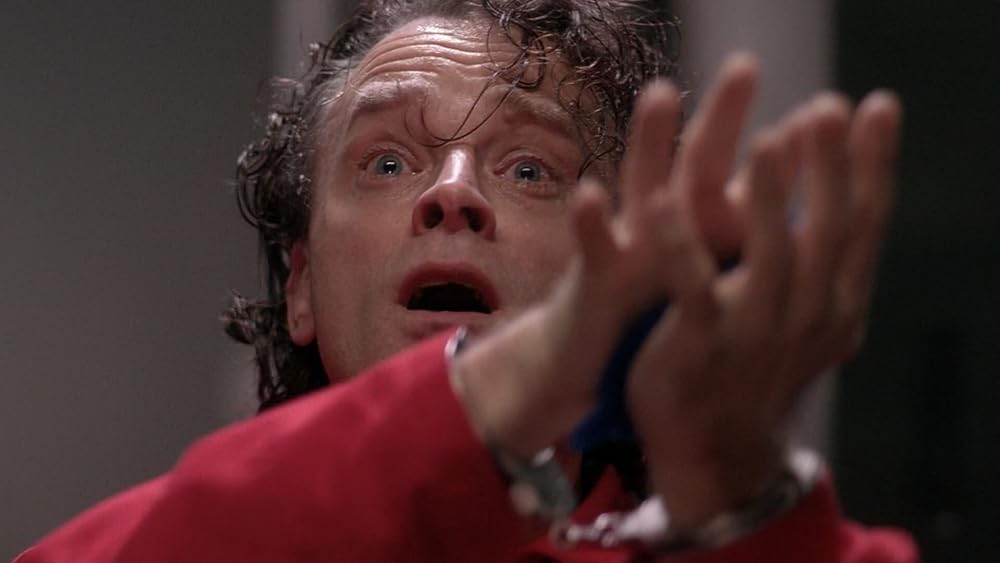
Brad Dourif has been doing movies for nearly 50 years. Now it seems he is walking away from the industry at 74 to enjoy his golden years. Except, there is a caveat.
Recently, digital entertainment publication JoBlo’s Tyler Nichols talked to some of the Chucky television series cast members. During the interview, Dourif made an announcement.
“Dourif said that he’s retired from acting,” says Nichols. “The only reason he came back for the show was because of his daughter Fiona and he considers Chucky creator Don Mancini to be family. But for non-Chucky stuff, he considers himself retired.”
Dourif has voiced the possessed doll since 1988 (minus the 2019 reboot). The original movie “Child’s Play” has become such a cult classic it’s at the top of some people’s best chillers of all time. Chucky himself is ingrained in pop culture history much like Frankenstein or Jason Voorhees.
While Dourif may be known for his famous voiceover, he is also an Oscar-nominated actor for his part in One Flew Over the Cuckoo’s Nest. Another famous horror role is The Gemini Killer in William Peter Blatty’s Exorcist III. And who can forget Betazoid Lon Suder in Star Trek: Voyager?
The good news is that Don Mancini is already pitching a concept for season four of Chucky which might also include a feature-length movie with a series tie-in. So, Although Dourif says he is retiring from the industry, ironically he is Chucky’s friend till the end.
Listen to the 'Eye On Horror Podcast'
Editorial
7 Great ‘Scream’ Fan Films & Shorts Worth a Watch
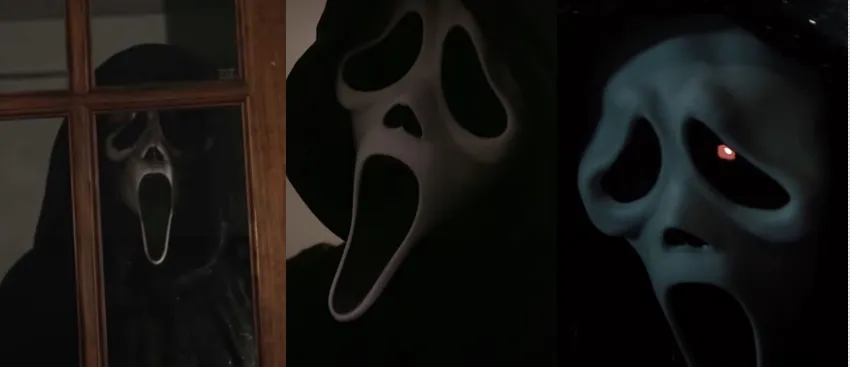
The Scream franchise is such an iconic series, that many budding filmmakers take inspiration from it and make their own sequels or, at least, build upon the original universe created by screenwriter Kevin Williamson. YouTube is the perfect medium to showcase these talents (and budgets) with fan-made homages with their own personal twists.
The great thing about Ghostface is that he can appear anywhere, in any town, he just needs the signature mask, knife, and unhinged motive. Thanks to Fair Use laws it’s possible to expand upon Wes Craven’s creation by simply getting a group of young adults together and killing them off one by one. Oh, and don’t forget the twist. You’ll notice that Roger Jackson’s famous Ghostface voice is uncanny valley, but you get the gist.
We have gathered five fan films/shorts related to Scream that we thought were pretty good. Although they can’t possibly match the beats of a $33 million blockbuster, they get by on what they have. But who needs money? If you’re talented and motivated anything is possible as proven by these filmmakers who are well on their way to the big leagues.
Take a look at the below films and let us know what you think. And while you’re at it, leave these young filmmakers a thumbs up, or leave them a comment to encourage them to create more films. Besides, where else are you going to see Ghostface vs. a Katana all set to a hip-hop soundtrack?
Scream Live (2023)
Ghostface (2021)
Ghost Face (2023)
Don’t Scream (2022)
Scream: A Fan Film (2023)
The Scream (2023)
A Scream Fan Film (2023)
Listen to the 'Eye On Horror Podcast'
Movies
Another Creepy Spider Movie Hits Shudder This Month
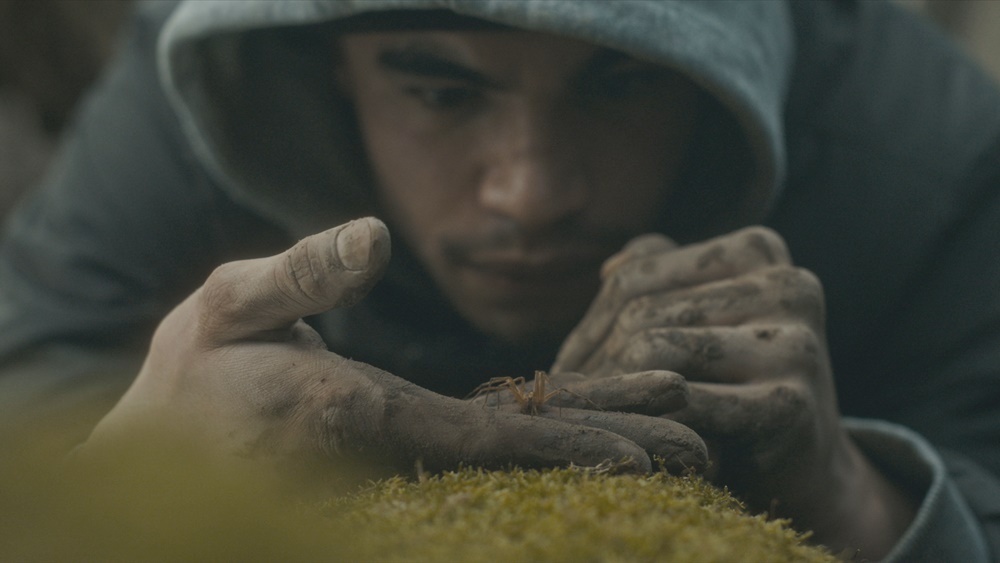
Good spider films are a theme this year. First, we had Sting and then there was Infested. The former is still in theaters and the latter is coming to Shudder starting April 26.
Infested has been getting some good reviews. People are saying that it’s not only a great creature feature but also a social commentary on racism in France.
According to IMDb: Writer/director Sébastien Vanicek was looking for ideas around the discrimination faced by black and Arab-looking people in France, and that led him to spiders, which are rarely welcome in homes; whenever they’re spotted, they’re swatted. As everyone in the story (people and spiders) is treated like vermin by society, the title came to him naturally.
Shudder has become the gold standard for streaming horror content. Since 2016, the service has been offering fans an expansive library of genre movies. in 2017, they began to stream exclusive content.
Since then Shudder has become a powerhouse in the film festival circuit, buying distribution rights to movies, or just producing some of their own. Just like Netflix, they give a film a short theatrical run before adding it to their library exclusively for subscribers.
Late Night With the Devil is a great example. It was released theatrically on March 22 and will begin streaming on the platform starting April 19.
While not getting the same buzz as Late Night, Infested is a festival favorite and many have said if you suffer from arachnophobia, you might want to take heed before watching it.
According to the synopsis, our main character, Kalib is turning 30 and dealing with some family issues. “He’s fighting with his sister over an inheritance and has cut ties with his best friend. Fascinated by exotic animals, he finds a venomous spider in a shop and brings it back to his apartment. It only takes a moment for the spider to escape and reproduce, turning the whole building into a dreadful web trap. The only option for Kaleb and his friends is to find a way out and survive.”
The film will be available to watch on Shudder starting April 26.
Listen to the 'Eye On Horror Podcast'
-

 News3 days ago
News3 days agoThis Horror Film Just Derailed a Record Held by ‘Train to Busan’
-
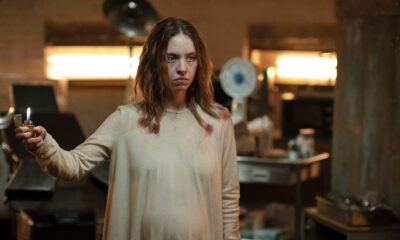
 Movies4 days ago
Movies4 days agoWatch ‘Immaculate’ At Home Right Now
-

 News3 days ago
News3 days agoHome Depot’s 12-Foot Skeleton Returns with a New Friend, Plus New Life-Size Prop from Spirit Halloween
-

 News5 days ago
News5 days agoRead Reviews For ‘Abigail’ The Latest From Radio Silence
-

 News4 days ago
News4 days agoMelissa Barrera Says Her ‘Scream’ Contract Never Included a Third Movie
-
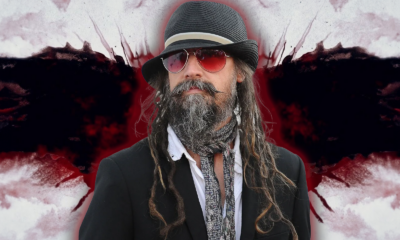
 Editorial5 days ago
Editorial5 days agoRob Zombie’s Directorial Debut Was Almost ‘The Crow 3’
-

 News2 days ago
News2 days agoWoman Brings Corpse Into Bank To Sign Loan Papers
-

 News4 days ago
News4 days agoA24 Joins Blockbuster Movie Club With Their Biggest Opening Ever
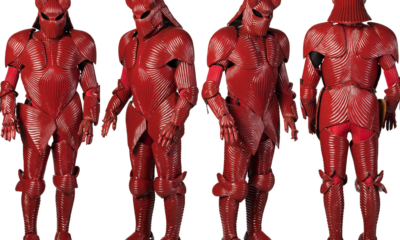

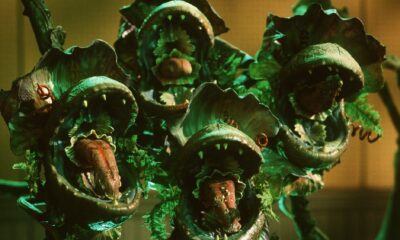























You must be logged in to post a comment Login